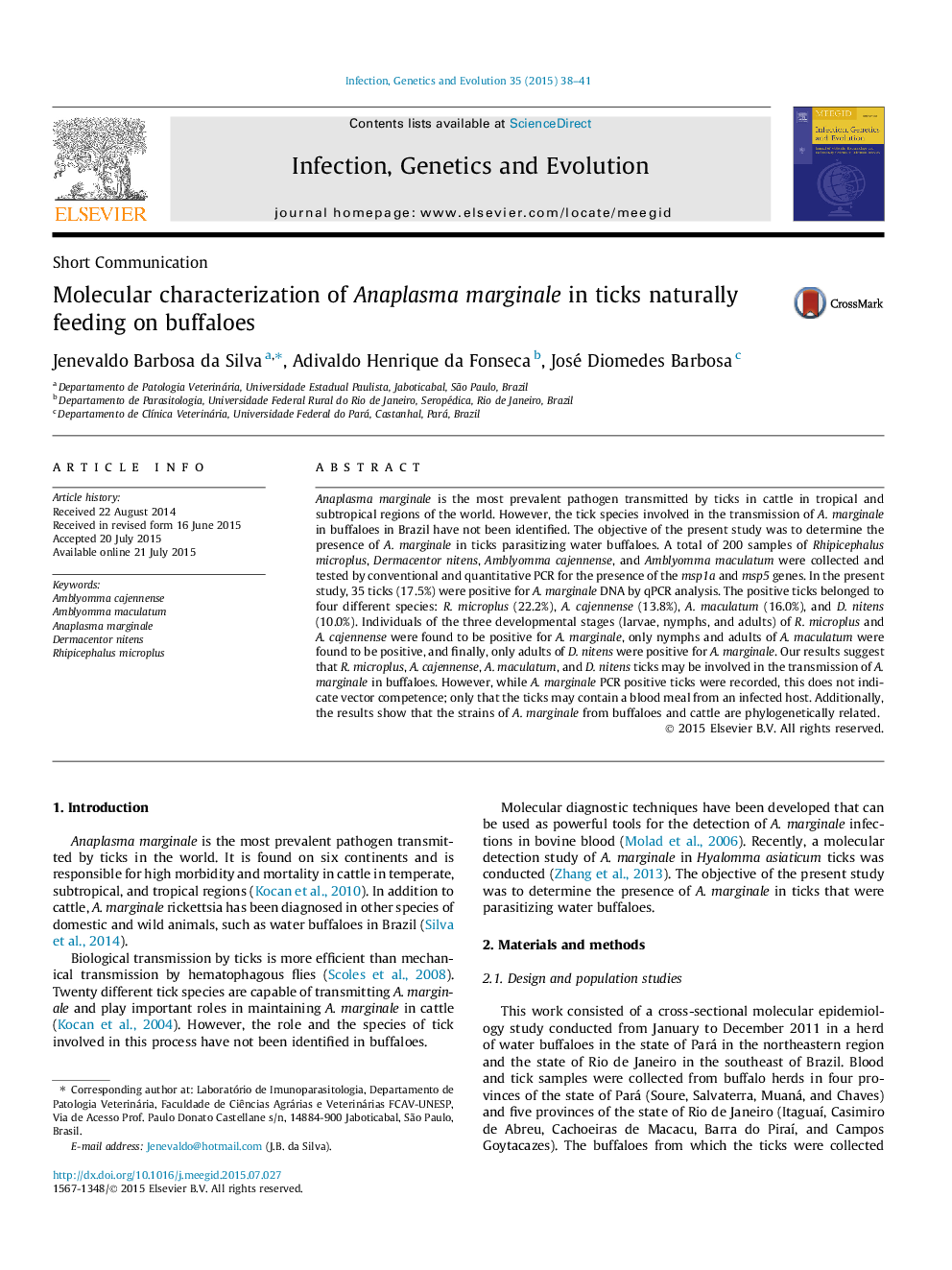| Article ID | Journal | Published Year | Pages | File Type |
|---|---|---|---|---|
| 5908461 | Infection, Genetics and Evolution | 2015 | 4 Pages |
Anaplasma marginale is the most prevalent pathogen transmitted by ticks in cattle in tropical and subtropical regions of the world. However, the tick species involved in the transmission of A. marginale in buffaloes in Brazil have not been identified. The objective of the present study was to determine the presence of A. marginale in ticks parasitizing water buffaloes. A total of 200 samples of Rhipicephalus microplus, Dermacentor nitens, Amblyomma cajennense, and Amblyomma maculatum were collected and tested by conventional and quantitative PCR for the presence of the msp1a and msp5 genes. In the present study, 35 ticks (17.5%) were positive for A. marginale DNA by qPCR analysis. The positive ticks belonged to four different species: R. microplus (22.2%), A. cajennense (13.8%), A. maculatum (16.0%), and D. nitens (10.0%). Individuals of the three developmental stages (larvae, nymphs, and adults) of R. microplus and A. cajennense were found to be positive for A. marginale, only nymphs and adults of A. maculatum were found to be positive, and finally, only adults of D. nitens were positive for A. marginale. Our results suggest that R. microplus, A. cajennense, A. maculatum, and D. nitens ticks may be involved in the transmission of A. marginale in buffaloes. However, while A. marginale PCR positive ticks were recorded, this does not indicate vector competence; only that the ticks may contain a blood meal from an infected host. Additionally, the results show that the strains of A. marginale from buffaloes and cattle are phylogenetically related.
